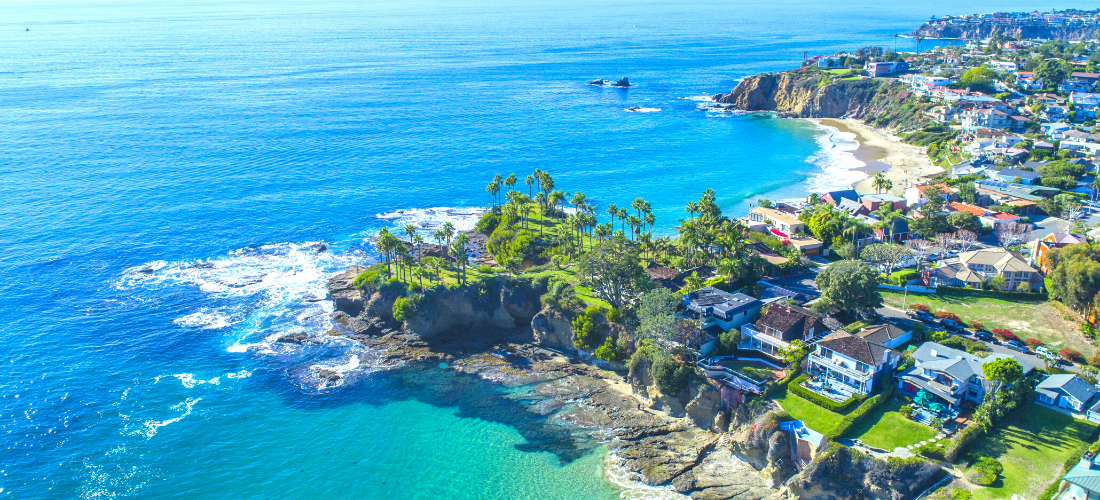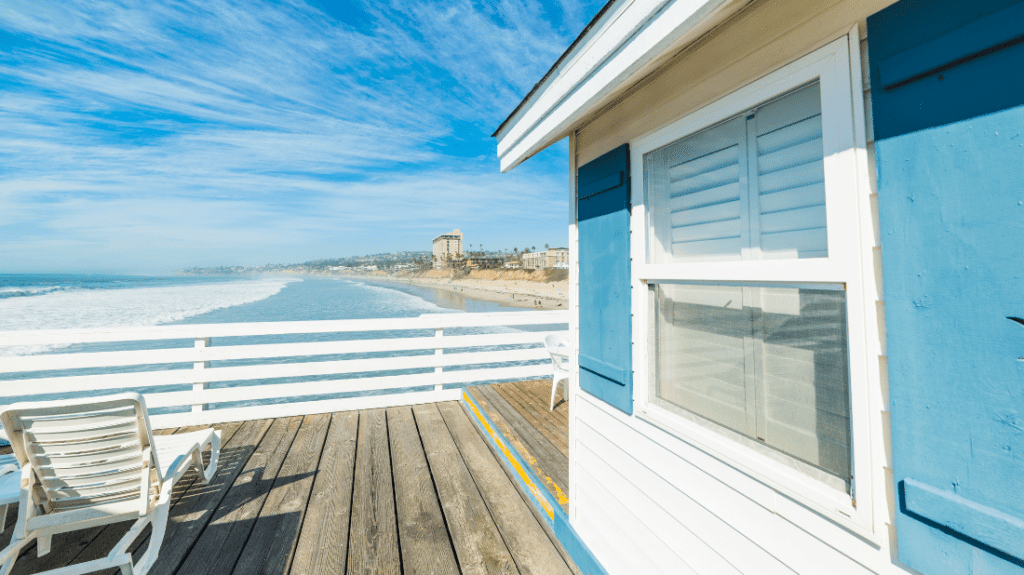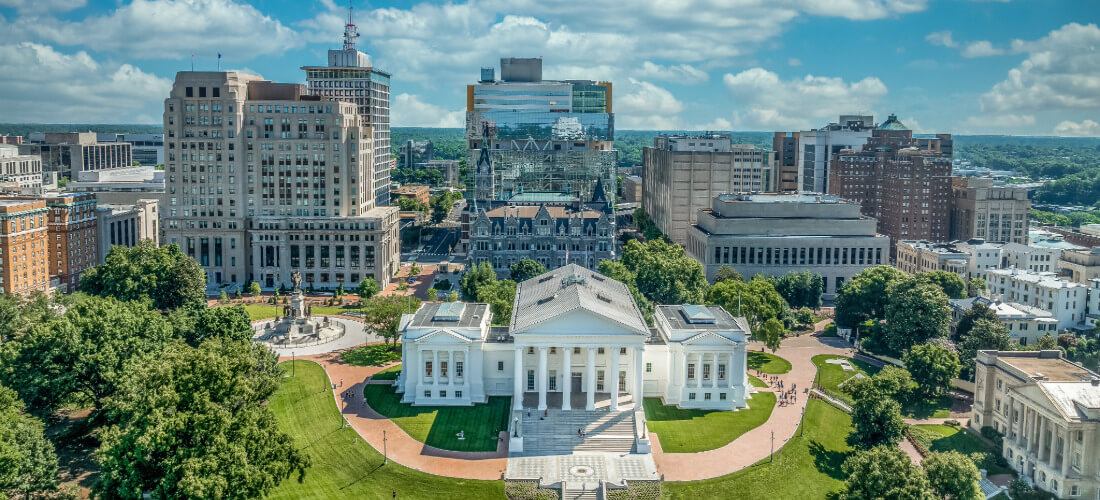
This article is part of an ongoing series of reports on the state of short-term rentals (STRs) in the United States. You can view our other reports here.
2021 was a rebound year for the short-term rental market, with a serious bounce back after travel demand went into free fall during the 2020 pandemic lockdown. While the overall trend was up, some markets have rebounded quicker than others. Perhaps unsurprisingly, given the nature of the pandemic, consumers booked fewer urban stays and instead traveled to less populated rural areas or locations where outdoor activities were the main draw, such as desert and beach towns.
As the STR industry continues its recovery, some locations are poised to fare well again this year, with a perennial favorite, Southern California, among the regions containing multiple destinations that are expected to be in demand for vacation rentals. How are municipalities in Southern California handling these STRs? Here’s a look at the ways local governments are working to effectively manage some of the top markets in the region.
Huntington Beach
Huntington Beach is among the strictest when it comes to STR rules. Divided into two zones, both hosted (owner on-premises) and unoccupied STRs are allowed in the beachfront Sunset Beach. But for the rest of the city, only hosted STRs are permitted. Properties also have to be inspected by code enforcement before a permit is issued.
San Diego
 Home to some of the West Coast’s best beaches, San Diego recently implemented a cap on STRs that is due to take effect this fall. Whole-home rentals will be capped at 1 percent of the city’s housing units, with the exception of the travel-popular Mission Beach neighborhood, which will have a 30 percent cap. The new cap is estimated to reduce the amount of STRs on the market by nearly 50 percent. Individuals who rent out whole-home STRs for more than 20 days a year are permitted one license, while unlimited licenses are available to those who list rentals for less than 20 days per year or offer single rooms for rent. The city will also implement a permit lottery system that prioritizes veteran rental operators with a clean history of zero code violations.
Home to some of the West Coast’s best beaches, San Diego recently implemented a cap on STRs that is due to take effect this fall. Whole-home rentals will be capped at 1 percent of the city’s housing units, with the exception of the travel-popular Mission Beach neighborhood, which will have a 30 percent cap. The new cap is estimated to reduce the amount of STRs on the market by nearly 50 percent. Individuals who rent out whole-home STRs for more than 20 days a year are permitted one license, while unlimited licenses are available to those who list rentals for less than 20 days per year or offer single rooms for rent. The city will also implement a permit lottery system that prioritizes veteran rental operators with a clean history of zero code violations.
La Quinta
Like other locations in the low desert, La Quinta, with its proximity to golf courses, spas, and music festivals like Coachella, is a hot spot for STRs. City leaders there have come up with a unique solution to tackling STR management, using AI that mines real estate data to get a hold on vacation rentals operating without permits.
Joshua Tree
Arguably the most popular destination in the high desert, Joshua Tree is home to a national park that has seen its attendance more than double over the past seven years. County planners are mulling regulations that include a two-night minimum stay on weekends, with a limit of one STR for parcels under two acres and two STRs for larger parcels.
Yucca Valley
In nearby Yucca Valley, an STR cap of 10% of single-family housing units was recently implemented to combat the desert housing crisis, while duplexes and condos were barred from use as STRs. STR owners are also required to install noise-monitoring equipment and must turn the data over to the town in the event of a noise complaint.
Big Bear
Big Bear, a popular ski destination, requires a home inspection prior to issuing an STR permit. The city also requires owners to collect and remit 11% of gross receipts every month.
Ready to speak to someone about your software needs?
Indio
Indio is home to the world-famous Coachella music festival, and some of the regulations are likely informed by the group-heavy event, such as the recently-passed rule of a hard cap of 20 overnight guests in an STR (owners could previously get an exemption if the rental was proven to accommodate more). Indio also requires owners to register for Transient Occupancy Tax (TOT) collection.
Newport Beach
Newport Beach, among the most visited SoCal destinations, generates about $4 million in annual tax revenue from STRs, according to the OC Register. The city has implemented a minimum stay requirement for STRs, started a hotline for complaints, requires renters to be at least 25 years of age, and asks that STR owners submit a “nuisance response plan” to the city before they can qualify for a permit.
Dana Point
Dana Point, another example of an Orange County hotspot, requires STR properties to have a minimum of two designated off-street parking spots and asks STR property owners to respond to any disturbances at the rental location within half an hour of the occurrence. Dana Point also works with a third-party service to help identify and remove online advertisements for illegal rentals.
STR Demand Will Continue to Grow – Are You Ready?
STR demand will continue to grow in the coming years, and it’s important for local governments to be well-equipped to respond – no matter what region they’re in. As evidenced in the above examples, how a city manages STRs depends on a wide variety of complex factors unique to the area, and there’s no one-size-fits-all solution. GovOS can help your municipality meet its specific needs to more easily and effectively manage STRs. From maintaining public safety to ensuring that your city isn’t missing out on taxes from these properties, learn more about how GovOS simplifies the various components of STR management here.










